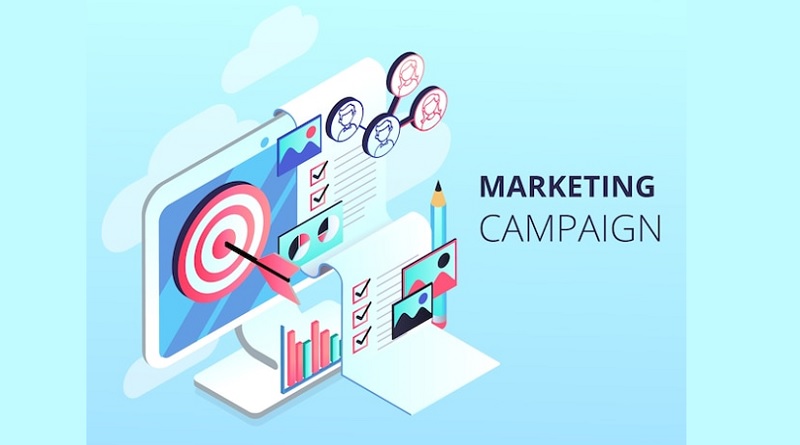Reinventing Web Design: Grapes Studio Lets Small Businesses Build Sites in Minutes
How To Build The Perfect Marketing Campaign

Marketing campaigns can do the same for your business. Marketing campaigns are organized, strategized efforts to promote a specific company goal, such as raising awareness of a new product or capturing customer feedback. They typically aim to reach consumers in a variety of ways and involve a combination of media, including but not limited to email, print advertising, television or radio advertising, pay-per-click, and social media.
Now that you understand what could go wrong, let us focus on the positives. Here are some crucial steps retailers should follow to build the perfect marketing campaign:
Run a SWOT Analysis
Start by running a SWOT analysis with team members to identify your business’ strengths, weaknesses, opportunities, and threats.
- Finding your strengths.
This can help you identify what you are best at and use it to your advantage for the marketing campaign. For example, if candles are one of your best-sellers, make them the focus of your campaign. Since they already sell well, your campaign is also likely to do well. - Finding your weaknesses.
Identifying your weaknesses could very well help prevent the disaster that Grubhub went through. If you have a small team or a limited number of resources, do not over-stretch yourselves with an elaborate marketing campaign that needs more manpower to function properly. - Finding your opportunities.
You and your team need to strategize on the different areas your business can improve on. Spot the external factors that represent the motivation for your brand to existing. You can do this by targeting a specific demographic or broadening your marketing reach to other channels. - Finding your threats.
On the other hand, it is also important for you and your team to spot the factors that have the potential to place your business at risk. For example, avoid certain wording in your campaign that would be offensive to some consumers and cause them to lash out at you.
Figure Out the End Goal
To craft the perfect marketing campaign, you need to figure out the end goal. If you do not yet know, here are some questions to ask yourself and your team:
- Are you looking for more followers?
- Are you trying to promote a new product?
- Did you just start your company and are looking to get more brand awareness?
- Are you looking to promote your website?
- Are you looking to advertise an event or pop-up location?
- Do you want to endorse your loyalty program?
- Will you be offering a new service to customers?
- Are you promoting a sale or discount offer?
Pick a question that best suits what you are looking to accomplish with this marketing campaign, and keep that end goal in mind when curating your plan of action. This will help you to include certain details and pictures for viewers to see, which will inevitably make them want to learn more about your business.
Choose a Platform
No matter what your end goal is, there are a wide variety of platforms to execute your marketing campaign. Even though all marketing platforms are effective in their ways, depending on the demographic you are trying to reach, some may be better than others. Here is what you can expect from each platform to help you make your decision:
Search Engine Optimization (SEO)
SEO has become widely adopted as an online marketing strategy because of its effectiveness. Not only is it one of the most cost-effective strategies, but it can also drastically increase traffic to your website as well as brand awareness. Whether you are a well-established company or a simple startup, SEO is a great option. Here are the pros and cons of this strategy:
Pros
- Free of cost
- Can help in improving localized traffic
- Works as a proof for mobile-friendly and responsive sites
- Good SEO shows you are professional and your site is secured, also no grammatical errors
- Long-term benefits like ranking well for your niche will pay off in years to come
Cons
- SEO does not guarantee results
- Difficult to measure how well every tactic is performing
- Black hat SEO strategies will lead to penalties
- SEO is vulnerable, so a single change can downgrade your website tracking
- Results take time
Email Marketing
When done correctly, email marketing is still a highly effective way to communicate with customers and should be a staple of almost any small business marketing strategy, according to Dandelion Marketing. Around 4 billion people worldwide use email, which means there are more email users than Facebook and Twitter users combined. Smartphones make it easier to check email wherever you are, and the majority of Americans are checking their email daily. Here are the pros and cons of this strategy
Pros
- An affordable way to engage your audience
- A great tool for other platforms to use, such as Facebook custom ads
- Helps in building customer relationships and enhancing brand recognition
- Email marketing campaigns can be created and launched quickly
- Campaigns are customizable, and the data and analytics are easy to capture and track
Cons
- Consumers get so many emails, so they have a tendency to ignore some
- Email marketing does not grow itself. It is a by-product of content marketing, PPC, and social media marketing
- Poorly designed emails will not get delivered. Thus, high-quality designs are important
- The files have to be small enough for easy download
- Requires proper resources and skills
Pay Per Click (PPC)
They may have been around for a while, but pay-per-click advertising is still one of the most effective tools available to any marketer. According to SocialMediaToyda, more than seven million advertisers invested a total of $10.1 billion in PPC ads just during 2017. Google reports that search ads can boost brand awareness by as much as 80%, making consumers more likely to remember your brand and interact. Here are the pros and cons of this strategy:
Pros
- Offers to retarget and remarket viewers
- PPC gives you measurable and analytical results
- Allows you to track ROI and conversion pixels
- PPC offers quick results and is affordable
- Allows you to track the ads in real-time
- Drives better control and exposes your business both locally and globally
Cons
- PPC is not free, and the ads will disappear when the campaign ends
- It is not a sure-fire way to increase conversion
- Requires a lot of activities like testing landing pages, keywords, bids, and ad copies
Social Media Marketing
Social media advertising is a rapidly growing field. It is a tool businesses can use to increase brand awareness, attract new customers, and grow their customer base. Social media platforms allow users to spend time with more relevant content than traditional advertisements, making ads more valuable because they are more likely to be seen by the people that matter most for a product or service. Here are the pros and cons of this strategy:
Pros
- A low-cost digital marketing option
- Can cater to a wide audience
- Increases visibility, brand awareness, and brand recognition
- Helps in increasing accessibility for customers and also increases customer interaction
- Fast results
- Good for customer services
Cons
- Sometimes it can be time-consuming if not targeted properly
- Can generate negative brand perception in a short time
- ROI is hard to justify
- Content Marketing.
While this can also be the content you publish on social media, content marketing usually refers to blog posts or podcasts. The end goal is to provide valuable information to the user, and should not be a sales-oriented copy — it has to be informational, according to Skyram Technologies. This content should be similar to the types of products you sell, so this way you can intertwine certain products into the subject matter. Here are the pros and cons of this strategy:
Pros
- Content marketing helps in building authority and is affordable
- A long-term process that creates lasting effects on users
- Can be used in other forms of marketing and customer services as well
- Enables you to reach the right audience
- Provides better results
Cons
- It can get expensive for certain areas, especially for video and podcasting
- Takes time, creativity, and diverse skills
- Requires paid advertising promotions
- Establish How You Will Measure Your Campaign
This will look different for everyone depending on the channels you are leveraging and your end goal. You might measure email open rates, new Facebook Page likes, product pre-orders, or a combination — these answers will depend on your overarching campaign goal. Here are a few examples of metrics from Hubspot based on the end goals mentioned above:
- For promoting a new product or service: Pre-orders, sales, upsells
- For increasing brand awareness: Sentiment, social mentions, press mentions
- For gathering customer feedback or content: Social mentions, engagement
- For generating revenue: Leads, sales, upsells
- For boosting user engagement: Blog shares, social shares, email interactions
- For advertising an upcoming event: Ticket sales, vendor or entertainment bookings, social mentions
Set a Timeline
Establishing a deadline for your campaign gives you a much better idea of when, how, and how often you will promote it. It can also help you to measure how well it is doing, so you can decide if a certain strategy can be used again in the future, or if another strategy is better.
Always include a budget in your marketing plan timeline to ensure you have the resources to implement your strategy, according to Jotform. For example, if one of your tactics is influencer marketing, estimate how much it will cost for each influencer campaign you want to run. Your budget should also include an estimate of the time each tactic will take so that you can account for the salary and hourly cost of everyone involved with the project — from the marketing manager and graphic designer to the writers and social media manager. In addition, factor in any assets you might need to purchase, such as stock images and video, and advertising budgets you will need to promote each campaign, such as for paid social ads.
Ensure Your Campaign is Driving Users Toward the Desired Action
Once you have all of the basics set up before you click ‘submit,’ make sure that whatever you have created is driving your viewers toward the desired action. For example, even if you are just promoting a new product, offer a link to pre-order the item. They may be excited about the new release, but the excitement will quickly fade if there is no way to immediately take them to your website to purchase or fill out a pre-order form.
Creating a solid marketing campaign is not easy, especially with consumer interests constantly changing. Let this guide be your starting point and spark some creativity for you and your team as you continue to develop your strategies and grow your business.




